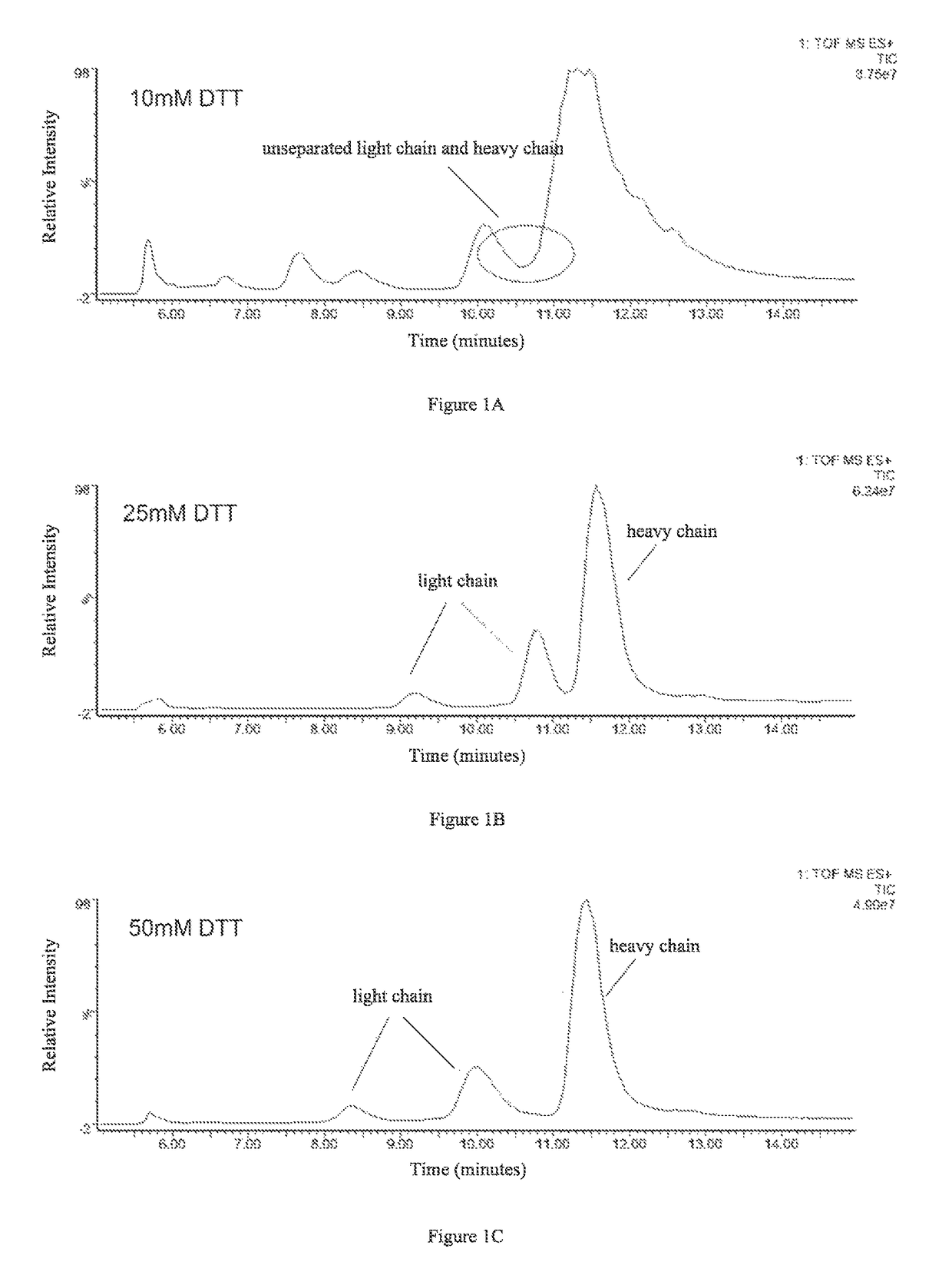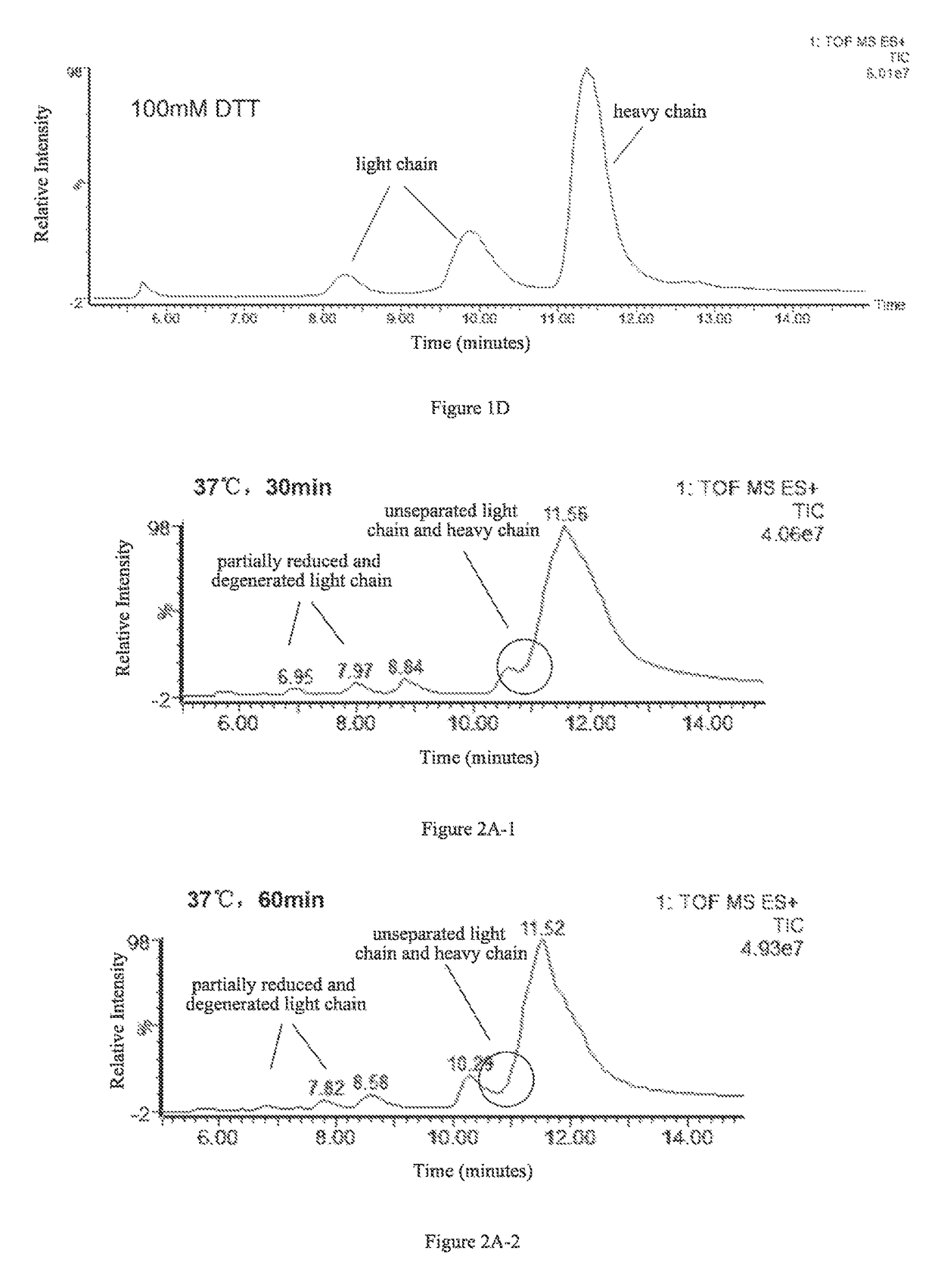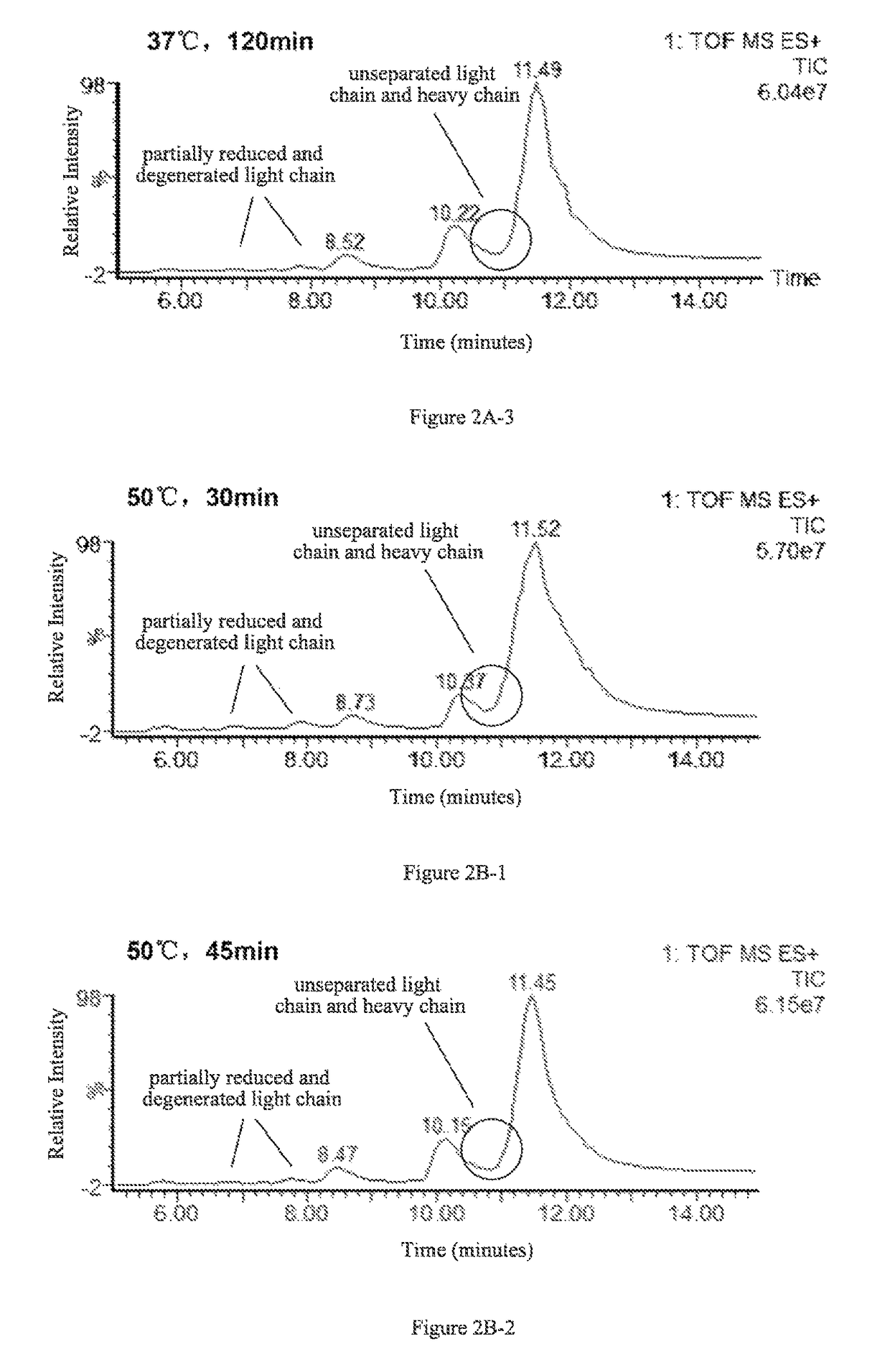Method for determining glycosylation and terminal modification of samples during protein purification process
a protein purification and terminal modification technology, applied in the field of biotechnology, can solve the problems of large amount of sample, uneven glycosylation, and complicated sample handling, and achieve the effects of simple sample handling, rapid determination of glycosylation, and improved resolution and accuracy of test results
- Summary
- Abstract
- Description
- Claims
- Application Information
AI Technical Summary
Benefits of technology
Problems solved by technology
Method used
Image
Examples
example 1
Determination of Conditions for Immunoglobulin Reducing Method
1.1 Determination of the Amount of Reducing Agent DTT
[0050]The effects of four different amounts of DTT on separation of the light and heavy chains were examined. 4 aliquots of 5 μg antibody protein A were respectively added to 10 μL 6 M guanidine hydrochloride solution, followed by the addition of 0.1 M DTT solution, 2 μL and 5 μL, and 0.5 M DTT solution, 2 μL and 4 μL, as well as appropriate amounts of 6 M guanidine hydrochloride solutions to make final DTT concentrations of 10 mM, 25 mM, 50 mM, and 100 mM, respectively. Then the resulting products were reacted with said IgG1 protein at 65° C. for 45 min.
[0051]C4 reverse-phase high pressure liquid chromatography was used to separate the light and heavy chains obtained in the reactions, and the liquid phase system used was UPLC (Waters, ACQUITY). Column: Waters, ACQUITYUPLC column, BEH C4, 1.7 μm (diameter), 300 Å (aperture), 2.1×50 mm. Chromatographic conditions were se...
example 2
Determining the Glycosylation and Terminal Modification of Antibody A and Antibody B (IgG1) Using UPLC-MS Method of the Present Invention
[0073]The glycosylation and terminal modification of antibody A and antibody B were analyzed using the optimized reduction conditions (5 μg antibody A was added to 10 μL 6 M guanidine hydrochloride solution, followed by the addition of 2 μL 0.5 M DTT solution and finally an appropriate amount of 6 M guanidine hydrochloride solution, to make a final DTT concentration of 50 mM; reacted for 45 min at 65° C.), UPLC separation (the same as Example 1.1), ESI-MS detection (the same as Example 1.1), and normalized data processing (the same as Example 1.2). The first amino acids at N-terminal of light chain and heavy chains of antibody A were both glutamine (Gin), for which pyroglutamic acid cyclization occurs readily. The first amino acids at N-terminal of light chain antibody B was glutamic acid (Glu), for which pyroglutamic acid cyclization does not occu...
example 3
Determining the Glycosylation and Terminal Modification of Each Component of Antibody A after Purification Using UPLC-MS Method of the Present Invention
[0075]In purification process of antibody A, a conventional strong cation-exchange chromatography was used, with 20 mM sodium phosphate buffer as loading buffer, 20 mM sodium phosphate and 1 M sodium chloride buffer (pH=6.0) as elution buffer, a flow rate of 200-400 cm / h. The eluting components were monitored by UV absorption at 280 nm. Then, the components of antibody A were collected in accordance with retention time: component 1 (4000-4300 min), component 2 (4300-4500 min), component 3 (4500-4650 min), component 4 (4650-4800 min), and component 5 (4800-5100 min). The glycosylation and terminal modifications of each component of the IgG1 were analyzed using the optimized reduction conditions (5 μg antibody A was added to 10 μL 6 M guanidine hydrochloride solution, followed by the addition of 2 μL 0.5 M DTT solution and finally an a...
PUM
| Property | Measurement | Unit |
|---|---|---|
| concentration | aaaaa | aaaaa |
| temperature | aaaaa | aaaaa |
| temperature | aaaaa | aaaaa |
Abstract
Description
Claims
Application Information
 Login to View More
Login to View More - R&D
- Intellectual Property
- Life Sciences
- Materials
- Tech Scout
- Unparalleled Data Quality
- Higher Quality Content
- 60% Fewer Hallucinations
Browse by: Latest US Patents, China's latest patents, Technical Efficacy Thesaurus, Application Domain, Technology Topic, Popular Technical Reports.
© 2025 PatSnap. All rights reserved.Legal|Privacy policy|Modern Slavery Act Transparency Statement|Sitemap|About US| Contact US: help@patsnap.com



